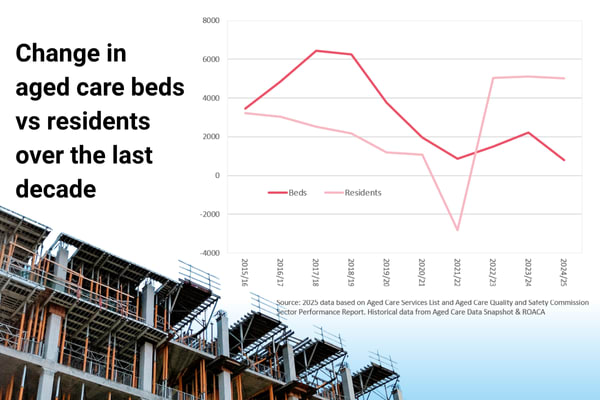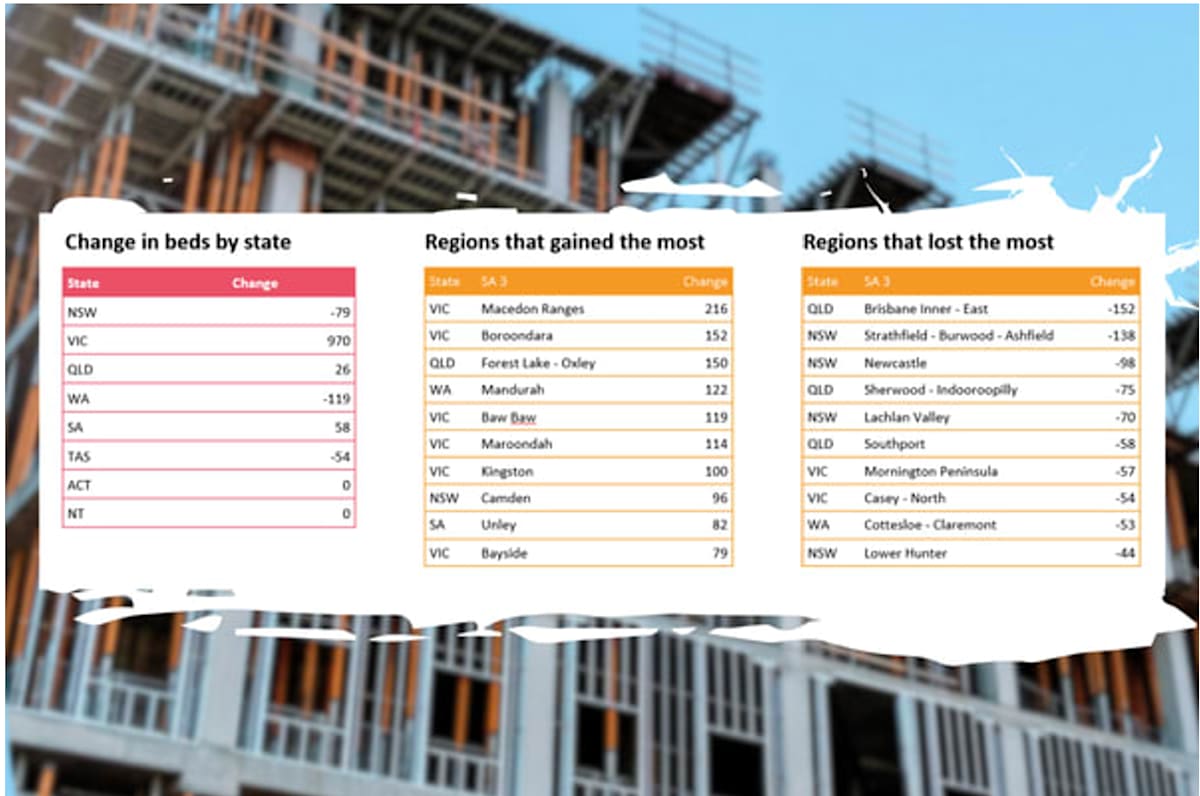Residential aged care bed growth is being rapidly outpaced by demand, with resident numbers increasing by about 5,000 per year versus just 800 net new beds in 2024-25.
An analysis by Not For Profit provider Bolton Clarke – following the release of the 2025 Aged Care Service List on 7 October – shows new bed growth fell around 60% from the previous year and now lags well behind current demand. The data lands amid long hospital discharge waits for older people seeking an aged care bed.
Bolton Clarke Executive General Manager, Policy & External Relations, Tim Hicks – who conducted the review – said strong pre-pandemic growth in bed supply has dropped away just as resident growth accelerates.
“This acceleration in demand is likely to continue, with the Baby Boomers beginning to hit their 80s over the next decade,” he said.

Tim told The Weekly SOURCE that the headline net figure hides significant churn: roughly 1,700 beds from new homes opened, while around 1,150 beds were added via extensions. However, about 1,300 beds were lost from full home closures, with a further 700 beds lost from closed wings.
21,000 “vacant” beds may not exist
Bolton Clarke argues the Government’s figures showing around 21,000 “vacant” beds nationally misrepresent real availability, with many rooms offline for renovation or converted from shared to single rooms – and vacancies often failing to match local demand.
State trends are uneven: Victoria – which has a significant number of State Government-run aged care homes – recorded a net gain of 970 beds in 2024–25, while WA (-119), NSW (-79) and Tasmania (-54) went backwards.
By region, Brisbane’s inner east (-152), Strathfield-Burwood-Ashfield in Sydney’s Inner West (-138) and Newcastle (-98) saw the sharpest net losses.

Tim argued that while funding settings under the new Aged Care Act may lift accommodation revenue in wealthier areas, changes are required to make new builds viable elsewhere.
“Policy needs to fix the supplement for supported residents and factor in a reasonable margin for care and hotel services, or the business case for building residential care over retirement living will continue to fall short,” he said.
Tim also flagged scope to reallocate overstated Forward Estimates: with residents growing by around 5,000 per year – not the 9,000 projected by Government – any budgeted demand overrun should be redirected to kick-start construction and relieve today’s undersupply.
